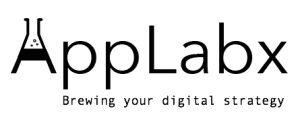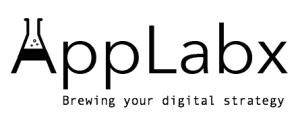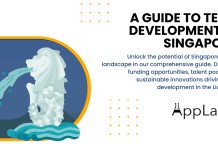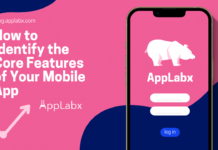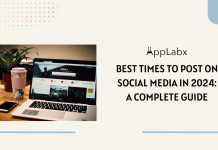Key Takeaways
- Master both core and advanced ASO strategies, including AI-driven keyword optimization and Custom Product Pages, to boost app visibility and conversions.
- Focus on retention, engagement, and in-app events, as these metrics heavily influence rankings in 2026.
- Integrate ASO with paid UA, SEO, social, and influencer campaigns to create a unified, data-driven growth strategy.
The mobile app ecosystem continues to expand at an unprecedented pace, and by 2026, the competition for visibility in app stores has reached a level that demands more than basic optimization. App Store Optimization (ASO), once limited to keyword placement and icon design, has evolved into a sophisticated discipline that integrates user experience, predictive analytics, and AI-driven strategies. For app developers and marketers, understanding the latest ASO trends and tactics is no longer optional—it is essential for driving organic installs, improving retention, and maximizing return on investment.

In 2026, the way users discover and engage with apps has fundamentally changed. Advances in artificial intelligence and machine learning have transformed app store search algorithms, making them more sensitive to user intent, engagement patterns, and post-install activity. Voice search and conversational queries are becoming increasingly common, and app stores are prioritizing listings that deliver a seamless, personalized experience. The rise of Custom Product Pages, in-app events, and localized content highlights the growing importance of tailoring app store listings to specific audiences and cultural contexts. At the same time, privacy regulations and consent-driven data collection are reshaping how developers can leverage user data to optimize visibility and performance.
This comprehensive guide is designed to equip app developers, marketers, and growth strategists with actionable insights and advanced strategies to rank higher in 2026. From mastering keyword research and metadata optimization to leveraging AI tools, predictive analytics, and engagement-driven tactics, this guide covers every essential aspect of modern ASO. It also addresses emerging trends such as Experience Optimization (AXO), retention-focused strategies, and market-specific personalization, offering practical recommendations to outpace competitors in a crowded mobile landscape.
By the end of this guide, readers will have a clear understanding of how to align their ASO efforts with evolving user behaviors, app store algorithms, and technological innovations. Whether you are launching a new app or seeking to revitalize an existing one, this resource provides a roadmap to increase visibility, attract high-quality users, and sustain long-term growth in the ever-changing mobile ecosystem of 2026.
ASO in 2026: A Complete Guide to Ranking Higher
- The State of ASO in 2026: Key Trends & Predictions
- Core ASO Pillars in 2026
- Advanced ASO Strategies for 2026
- Metrics & KPIs: What to Track in 2026
- Integrating ASO with Broader Growth Channels
- Common Mistakes & Challenges in 2026
- The Future of ASO — What Comes After 2026
1. The State of ASO in 2026: Key Trends & Predictions
The landscape of App Store Optimization (ASO) in 2026 is undergoing a transformative shift driven by technological advancements, evolving user behaviors, and changes in app store algorithms. Understanding these trends is essential for developers and marketers aiming to maintain visibility, improve conversion rates, and sustain organic growth.
Evolution Toward Experience Optimization (AXO)
- From ASO to AXO: Traditional ASO focuses on optimizing app listings to increase downloads. By 2026, the emphasis is shifting toward optimizing the entire user journey post-install, known as Experience Optimization (AXO).
- Key Components:
- Onboarding flow improvements to reduce churn
- Engagement-driven updates (in-app events, notifications, gamification)
- Retention metrics integrated into store ranking algorithms
- Example: Fitness apps now provide personalized workout plans immediately after installation, increasing retention and improving algorithmic ranking.
AI and Predictive Analytics
- AI-driven keyword research:
- Machine learning algorithms identify high-intent keywords based on user behavior and trends.
- Predictive models forecast seasonal spikes and emerging search terms.
- Content personalization: AI tools suggest metadata changes (titles, descriptions, screenshots) to optimize conversion.
- Example: An educational app uses AI to predict which lesson categories will trend next quarter and updates its App Store description accordingly.
Table 1: AI-Driven ASO vs Traditional ASO
| Aspect | Traditional ASO | AI-Driven ASO (2026) |
|---|---|---|
| Keyword Discovery | Manual research | Predictive analytics and trends |
| Metadata Optimization | Static | Dynamic and personalized |
| Performance Tracking | Basic rankings | Real-time engagement and retention |
| Market Adaptation | Generalized | Localized and audience-specific |
Voice Search and Conversational Queries
- Rise of voice-driven discovery:
- Users increasingly use voice assistants to search for apps, requiring natural-language optimization.
- Optimization strategies:
- Incorporate long-tail, conversational keywords in app title and description.
- Adjust metadata to answer common questions users might speak rather than type.
- Example: Recipe apps optimize their store listings with phrases like “best quick vegetarian meals” to match voice search queries.
Customization and Personalization
- Custom Product Pages (CPPs) for iOS & Android:
- Deliver tailored content for different user segments.
- Increase conversion by presenting relevant features based on acquisition channel.
- Example: E-commerce apps create separate CPPs for fashion, electronics, and home appliances targeting specific demographics.
Matrix 1: Personalization Impact on Conversion
| Personalization Level | CTR Increase | Conversion Rate Increase |
|---|---|---|
| None | 0% | 0% |
| Basic (image/description) | 12% | 8% |
| Advanced (CPP, segmented) | 28% | 22% |
In-App Events as Discoverability Levers
- Definition: Events such as promotions, challenges, or updates appear on the app store, driving visibility and re-engagement.
- Best Practices:
- Schedule seasonal or trending events.
- Align event metadata with relevant keywords for higher discoverability.
- Example: A mobile gaming app launches a Halloween event; featuring it in the store boosts downloads by 35% during the event period.
Privacy-First Optimization
- Impact of privacy regulations:
- Consent-driven data collection limits tracking but increases focus on organic growth signals.
- Store algorithms weigh retention and engagement more heavily than paid acquisition.
- Optimization approach:
- Focus on first-party data for personalization.
- Prioritize high-quality content and updates to drive engagement.
Localization and Global Expansion
- Beyond translation: Cultural adaptation, currency adjustments, local visuals, and region-specific promotions.
- Benefits: Boost conversion, retention, and visibility in non-English speaking markets.
- Example: A meditation app provides localized audio, culturally relevant illustrations, and local keywords to increase downloads in Japan and Germany.
Table 2: Localization Strategies for 2026
| Region | Localization Focus | Key Tactics |
|---|---|---|
| Asia | Cultural adaptation | Images, colors, keyword variations |
| Europe | Language + regulatory | GDPR-compliant metadata, local languages |
| Latin America | Currency + local trends | Seasonal campaigns, local payment options |
| Global | Scalable personalization | CPPs, segmented user targeting |
Update Frequency and Engagement Signals
- Frequent updates: Algorithms favor apps with consistent updates that demonstrate active engagement.
- Key factors:
- Release new features aligned with trends
- Optimize store metadata alongside updates
- Encourage user participation in updates (review prompts, event notifications)
- Example: A productivity app implements monthly updates with improved task templates; this consistent activity signals quality to the store algorithm, improving ranking.
Emerging Trend Summary Chart
| Trend | Impact on ASO 2026 | Example Use Case |
|---|---|---|
| Experience Optimization (AXO) | High | Personalized onboarding |
| AI & Predictive Analytics | High | Dynamic keyword optimization |
| Voice Search | Medium | Conversational app descriptions |
| Custom Product Pages | High | Segment-specific landing pages |
| In-App Events | Medium | Seasonal challenges |
| Privacy-First Optimization | High | First-party data strategies |
| Localization | High | Cultural and regional adaptation |
| Update Frequency | Medium | Regular feature updates |
2. Core ASO Pillars in 2026
The foundation of successful App Store Optimization (ASO) in 2026 continues to revolve around a set of core pillars that determine app visibility, conversion, and user retention. While technological advancements and AI-driven automation have evolved the practices, understanding these pillars remains essential for any app seeking sustained growth.
Keyword Optimization
- Intent-Driven Keyword Research:
- Focus on user intent rather than just search volume.
- Long-tail and conversational phrases dominate due to voice search prevalence.
- Utilize AI tools to identify emerging high-value keywords.
- Dynamic Keyword Management:
- Update keywords periodically based on trends, seasonal spikes, and competitor performance.
- Monitor search queries from in-app events and user feedback for new opportunities.
- Store-Specific Strategies:
- Apple App Store: emphasizes title, subtitle, and keyword field.
- Google Play Store: relies heavily on app description and semantic relevance.
- Example: A language-learning app discovers through AI that “learn Spanish while traveling” is trending. It incorporates this phrase in the title and subtitle, increasing click-through rate by 18%.
Table 1: Keyword Placement Strategies for 2026
| Platform | Priority Areas | Optimization Tip |
|---|---|---|
| iOS App Store | Title, Subtitle, Keyword Field | Include high-intent, long-tail keywords |
| Google Play Store | App Name, Description | Focus on natural, conversational phrases |
| Both Platforms | In-App Events, Custom Pages | Integrate trending search terms dynamically |
Visual Assets & Conversion Optimization
- Icon Design:
- Simple, recognizable, and brand-focused.
- Test variations to maximize tap-through rates.
- Screenshots:
- Storytelling format highlighting app benefits.
- Include captions, feature highlights, and localized visuals.
- Preview Videos:
- Short, high-quality, and benefit-oriented (15–30 seconds recommended).
- Highlight top features and user journey.
- A/B Testing:
- Test multiple creative variations to determine impact on installs.
- Continuous experimentation aligns with evolving store algorithms.
- Example: A travel app improved conversions by 25% after testing three different icon styles and two sets of localized screenshots.
Matrix 1: Visual Asset Optimization Impact
| Asset Type | Optimization Strategy | Expected CTR Improvement |
|---|---|---|
| Icon | Simplified + Brand Identity | 10–15% |
| Screenshots | Storytelling + Local Adaptation | 12–20% |
| Preview Video | Short & Benefit-Focused | 8–12% |
| A/B Testing | Iterative Creative Testing | 15–25% |
Metadata & Description Strategy
- Title & Subtitle Optimization:
- Incorporate primary keywords naturally.
- Keep concise, clear, and benefit-driven.
- Description Structuring:
- Use bullet points for scan-ability.
- Include secondary keywords naturally without keyword stuffing.
- Custom Pages & Listings:
- Tailor messaging for different audience segments.
- Align page content with acquisition channels or in-app events.
- Example: A finance app created separate Custom Product Pages for “Budgeting Tools” and “Investment Tracking,” achieving 22% higher conversion on targeted traffic.
Table 2: Metadata Optimization Checklist
| Metadata Element | Key Recommendation |
|---|---|
| Title | Primary keyword + value proposition |
| Subtitle | Secondary keyword + differentiator |
| Description | Bullets, keyword integration, benefits-focused |
| Custom Product Pages | Audience-specific, CTA-driven |
Ratings, Reviews & Sentiment Analysis
- Encouraging Reviews:
- Prompt users post-positive actions, such as completing a milestone.
- Avoid interrupting core user flows.
- Review Analysis:
- Use AI tools to analyze sentiment and extract actionable insights.
- Identify feature requests, bug reports, and engagement patterns.
- Response Strategy:
- Respond promptly to negative reviews to improve user trust.
- Highlight improvements in app updates.
- Example: A productivity app implemented AI sentiment analysis to address recurring feature complaints, resulting in a 4.5-star rating increase within three months.
Retention & Engagement
- Why Retention Matters:
- Algorithms now reward apps with consistent post-install engagement.
- Retention impacts long-term organic ranking.
- Key Tactics:
- Push notifications and in-app messaging aligned with user preferences.
- Loyalty programs and gamified rewards to boost engagement.
- Onboarding flow optimization to reduce early churn.
- Example: A meditation app used push notifications to remind users of daily sessions, increasing 30-day retention from 22% to 38%.
Chart 1: Retention Impact on Ranking
| Retention Rate (%) | Ranking Improvement |
|------------------|------------------|
| 20 | +1 |
| 35 | +3 |
| 50 | +5 |
Localization Strategy
- Beyond Translation:
- Adapt visuals, colors, cultural references, and local payment options.
- Testing Localized Creatives:
- Test icons, screenshots, and descriptions per region to optimize conversions.
- Monitoring & Iteration:
- Measure per-market performance and continuously optimize.
- Example: A health app increased installs in Germany and Japan by 40% after implementing localized images, keywords, and culturally relevant tutorials.
Table 3: Localization Focus by Region
| Region | Localization Priority | Key Tactics |
|---|---|---|
| Asia | Cultural adaptation | Images, colors, language variations |
| Europe | Language + compliance | GDPR-compliant metadata, translations |
| Latin America | Currency + seasonal trends | Local promotions, payment options |
| Global | Scalable personalization | Custom Product Pages, segmented targeting |
Update Velocity & Product Improvements
- Frequent Updates:
- Algorithms favor apps that demonstrate continuous improvement.
- Align updates with store features and trending search terms.
- Product Improvements:
- Introduce features that encourage engagement and retention.
- Highlight updates in store listing to improve visibility and conversion.
- Example: A mobile game implemented monthly feature updates and seasonal challenges, improving retention and organic ranking by 18%.
3. Advanced ASO Strategies for 2026
As App Store Optimization evolves in 2026, achieving top rankings requires moving beyond core pillars into advanced strategies that integrate AI, predictive analytics, personalized experiences, and data-driven decision-making. These strategies enable apps to stay ahead in highly competitive marketplaces, optimize conversion rates, and maximize user engagement.
Predictive Keyword and Trend Optimization
- Forecasting Keyword Trends:
- Utilize AI tools to analyze emerging search terms and predict trending keywords.
- Adjust metadata proactively to capture traffic before competitors.
- Long-Tail and Conversational Keywords:
- Focus on natural-language queries, particularly for voice search.
- Identify high-intent keywords that align with user problem-solving.
- Example: A fitness app uses predictive analytics to identify “home HIIT workouts for beginners” as an emerging search trend and updates its title and subtitle, resulting in a 20% increase in organic installs.
Table 1: Predictive Keyword Workflow
| Step | Description | Tools/Techniques |
|---|---|---|
| Data Collection | Gather keyword search trends and competitor data | App Annie, MobileAction |
| Trend Analysis | Identify seasonal spikes and emerging terms | AI-driven analytics |
| Metadata Update | Integrate trending keywords into listings | Title, subtitle, description |
| Performance Tracking | Monitor ranking and conversion impact | Store analytics dashboards |
AI-Driven Metadata Optimization
- Dynamic Metadata Adjustments:
- Automatically test variations of titles, descriptions, and screenshots based on real-time user behavior.
- AI tools can recommend the optimal combination to maximize tap-through and install conversion.
- Localized Personalization:
- Tailor descriptions, visuals, and CTAs for specific regions or user segments.
- Example: A finance app deploys AI to adjust its description dynamically for U.S. and UK audiences, increasing regional conversion rates by 18%.
Matrix 1: AI Metadata Optimization Impact
| Metadata Element | Traditional Approach | AI-Driven Approach | CTR Improvement |
|---|---|---|---|
| Title | Static | Dynamic, personalized | 10–15% |
| Description | Manual | AI-recommended updates | 12–18% |
| Screenshots | Single version | Region/segment variations | 15–20% |
Custom Product Pages & Segmented Listings
- Purpose:
- Create tailored app store experiences for different audience segments or acquisition channels.
- Align messaging, visuals, and CTAs to maximize relevance.
- Implementation Strategies:
- Segment by device type, location, user demographics, or acquisition source.
- Test multiple CPPs to measure performance impact.
- Example: A travel app creates separate CPPs for adventure, luxury, and family travel users, improving conversion for targeted segments by 25%.
Table 2: Custom Product Page Segmentation Example
| Segment | Focus Area | Key CTA |
|---|---|---|
| Adventure Travelers | Hiking & activities | “Plan Your Adventure Now” |
| Luxury Travelers | Premium hotels | “Book Exclusive Deals” |
| Family Travelers | Kid-friendly trips | “Discover Family Packages” |
Leveraging In-App Events Strategically
- In-App Event Optimization:
- Align events with relevant keywords and seasonal trends.
- Promote events via notifications, social channels, and app store placement.
- Event Metadata:
- Include descriptive titles, keywords, and CTAs to enhance discoverability.
- Example: A mobile game launches a summer festival event with keywords like “limited-time rewards” and “summer challenge,” increasing downloads during the event by 30%.
Chart 1: Impact of In-App Events on Conversion
| Event Type | Conversion Increase (%) |
|---------------------|------------------------|
| Seasonal Promotions | 20 |
| Feature Unlock Events| 15 |
| Limited Challenges | 25 |
Retention-Driven ASO Strategies
- Algorithm Influence:
- App stores increasingly factor retention, engagement, and session length into rankings.
- Retention Tactics:
- Personalized onboarding experiences to reduce early churn.
- Gamification, loyalty programs, and push notifications to sustain long-term engagement.
- In-app messaging that reinforces feature usage and milestones.
- Example: A meditation app implements a reward system for daily meditation streaks, boosting 30-day retention from 22% to 38%.
Matrix 2: Retention Tactics and Ranking Impact
| Tactic | Retention Improvement | Ranking Influence |
|---|---|---|
| Personalized Onboarding | +10–15% | Medium |
| Gamification & Rewards | +15–20% | High |
| Push Notifications | +8–12% | Medium |
| In-App Messaging | +10% | Medium |
Voice and Conversational Search Optimization
- Key Strategy:
- Incorporate natural-language and question-based keywords in titles, subtitles, and descriptions.
- Optimize metadata for common voice queries related to app functionality.
- Example: A cooking app includes keywords such as “easy recipes for beginners” and “quick dinner ideas” in metadata to capture voice-driven searches via digital assistants.
Table 3: Voice Search Keyword Integration
| Query Type | Metadata Placement | Conversion Impact |
|---|---|---|
| How-to phrases | Title, description | +12–15% |
| Benefit-focused questions | Description, screenshots | +8–10% |
| Seasonal or trending queries | In-app events, CPP | +10–12% |
Review and Sentiment Loop Optimization
- AI-Enhanced Review Analysis:
- Use AI to extract actionable insights from user reviews and app store feedback.
- Prioritize feature improvements and bug fixes based on sentiment trends.
- Review Management Strategy:
- Encourage high-quality reviews at peak satisfaction points.
- Respond to negative reviews promptly to enhance trust and retention.
- Example: A productivity app identifies recurring complaints about syncing features through AI sentiment analysis, implements improvements, and sees average rating rise from 4.1 to 4.6 in three months.
Advanced ASO Dashboard & Analytics
- Key Metrics:
- Keyword ranking trends, conversion rates, retention metrics, in-app event performance.
- Segment data by region, device, and acquisition channel.
- Benefits:
- Identify underperforming segments and optimize CPPs, metadata, or visual assets.
- Track predictive keyword performance to maintain competitive advantage.
Chart 2: Sample ASO KPI Dashboard Metrics
| Metric | Target 2026 | Current Value |
|-------------------------------|----------------|---------------|
| Organic Install Growth (%) | 20 | 15 |
| Retention (30-day) (%) | 40 | 35 |
| CTR (App Store Listing) (%) | 12 | 9 |
| Average Rating | 4.5 | 4.2 |
| In-App Event Participation (%)| 25 | 18 |4. Metrics & KPIs: What to Track in 2026
Understanding the right performance indicators is critical for sustaining visibility, accelerating organic growth, and improving overall app quality. In 2026, the most impactful ASO metrics extend far beyond traditional keyword rankings. App stores now reward engagement depth, retention patterns, conversion relevance, and experience quality, making modern ASO highly data-driven.
Below is a comprehensive breakdown of the essential KPIs, organized into key categories, supported by examples, comparison tables, and evaluation matrices.
Organic Visibility Metrics
- Keyword footprint is still important, but app stores now prioritize intent-rich signals and contextual relevance.
- Visibility metrics now incorporate multi-touch user behaviors, voice search exposure, and themed search categories.
Key Indicators
- Visibility Index
- Keyword Ranking Distribution
- Search Impression Share
- Voice Search Impression Share
- Category Ranking Volatility
- Featured Placement Frequency
Examples
- An education app appearing consistently in AI-powered “recommended for you” carousels gets a higher visibility score than a similar app ranking top 3 for static keywords.
- Grocery delivery apps now track voice search impressions for queries like “order food now” instead of relying primarily on exact-match keywords.
Visibility Metrics Matrix
| Metric | Measures | Why It Matters in 2026 | Example |
|---|---|---|---|
| Visibility Index | Overall search + browse presence | Reflects holistic discoverability | Health app scoring higher due to strong browse traffic |
| Keyword Coverage | Total ranking keywords | Shows semantic breadth | Fitness app ranking for “HIIT”, “workouts”, “calorie burn” |
| Featured Frequency | # of times featured | Signals trust from app stores | Finance app featured for “Best budgeting tools” |
Conversion Rate Optimization Metrics
- Conversion focuses on contextual experience, not just metadata.
- Custom Product Pages and AI-aligned visuals influence how users behave before the install.
Key Indicators
- Product Page Conversion Rate (PPCR)
- Custom Product Page Performance
- Creative Asset Conversion Lift
- Locale-Specific Conversion Rate
- A/B Test Win Rate
- Store Listing Engagement Depth
Examples
- Gaming publishers track Cinematic Trailer vs. Gameplay First Frame conversions to discover which content aligns with intent across regions.
- Health apps run localized A/B tests comparing UAE-specific cultural imagery vs. global imagery.
Conversion Funnel Table
| Stage | Metrics to Track | Signals | Example |
|---|---|---|---|
| Impression | Impressions, First-glance thumbnail scroll | Asset relevance | High scroll-past rate signals weak creatives |
| Engagement | Taps, screenshot swipes, video play | User evaluation behavior | Video plays increasing by 22% after redesign |
| Install | PPCR, CPP conversion | Final install rate | A CPP outperforming main page by 31% |
Engagement & Retention Metrics
- Stores evaluate app value from long-term engagement instead of Day-1 installs.
- Retention and in-app activity are crucial ranking factors.
Key Indicators
- Day-1, Day-7, Day-30 Retention
- Stickiness Ratio (DAU/MAU)
- Session Depth & Frequency
- Event Completion Metrics
- Uninstall Rate
- Cohort Retention Breakdown
Examples
- Meditation apps track “completion of 3 sessions in first week” as a core retention milestone.
- Ride-hailing apps monitor “first trip completed” within the first 48 hours as a micro-conversion.
Retention Performance Matrix
| Retention Level | KPI | Interpretation | Example |
|---|---|---|---|
| Early Retention | D1 | Initial product promise match | High D1 for games with strong onboarding |
| Mid Retention | D7 | Habit forming | Finance apps see higher D7 after personalized tips |
| Long-Term | D30 | Sustained product value | Learning apps see D30 spikes with streak badges |
Quality & Experience Metrics (AXO-Driven)
- AXO (App Experience Optimization) blends ASO with user experience signals.
- Poor AXO performance directly lowers ranking in 2026.
Key Indicators
- Crash Rate
- ANR (App Not Responding) Frequency
- App Size Load Time
- In-App Latency
- Consent Flow Abandonment Rate
- Review Sentiment Velocity
- AI-Detected Experience Score (AES)
Examples
- E-commerce apps lose ranking when checkout latency increases over 3 seconds.
- Games with high device-specific ANRs (often low-end devices) are deprioritized in certain regions.
Quality Assessment Comparison Table
| KPI | Target Range | Ranking Impact | Example |
|---|---|---|---|
| Crash Rate | < 0.5% | High | Banking apps must keep failures minimal |
| Load Time | < 3s | Medium | Streaming apps optimize heavy media content |
| Review Velocity | > 150/mo | High | Food delivery apps incentivize reviews through events |
Revenue & Monetization Metrics
- Monetization signals validate user satisfaction and value alignment.
- App stores increasingly factor revenue consistency into ranking for certain verticals.
Key Indicators
- ARPU (Average Revenue Per User)
- LTV (Lifetime Value)
- Subscription Conversion Rate
- Renewal Rate
- Churn Rate
- Purchase Cohort Growth
Examples
- Fitness apps track subscription renewal triggers after initial 14-day trial cycles.
- Language learning apps track “first in-app purchase after completing 2 lessons.”
Monetization Matrix
| Metric | Measures | Use in ASO Strategy | Example |
|---|---|---|---|
| ARPU | Revenue per active user | Identifies high-value regions | Higher ARPU in Japan vs. Brazil |
| LTV | Long-term value | Supports scaling paid acquisition | LTV > CPI unlocks budget |
| Renewal Rate | Subscription stickiness | Predicts long-term growth | Finance app renewal at 78% |
Sentiment & Review Metrics
- Sentiment analytics are fully AI-interpreted by 2026.
- Stores measure both volume and relevance of reviews.
Key Indicators
- Review Rating Average
- Review Freshness Index
- Sentiment Polarity Score
- Feature-Specific Sentiment Clusters
- AI Review Categorization Accuracy
Examples
- Ride-hailing apps track sentiment clusters such as “driver availability” and “payment issues.”
- Dating apps monitor “match quality” mentioned frequency after updates.
Review Sentiment Matrix
| Metric | Description | Value to ASO | Example |
|---|---|---|---|
| Sentiment Score | AI-evaluated polarity | Shows user trust | Dating app rising after fixing match algorithm |
| Review Volume | New reviews/month | Boosts visibility | Fast-growing apps gather more feedback |
| Feature Sentiment | Topic-specific feedback | Guides product updates | New chat feature praised in reviews |
Charts: Example KPI Trend Over Time (Synthetic Illustration)
Retention Trend (Example Data)
| Month | D1 Retention | D7 Retention | D30 Retention |
|---|---|---|---|
| Jan | 42% | 21% | 12% |
| Feb | 45% | 24% | 14% |
| Mar | 48% | 25% | 15% |
| Apr | 50% | 27% | 17% |
5. Integrating ASO with Broader Growth Channels
In 2026, successful app growth no longer depends on ASO alone. App stores now evaluate signals from multiple acquisition channels, user touchpoints, and cross-platform behaviors. Integrating ASO with paid marketing, influencer outreach, web SEO, social campaigns, and lifecycle automation creates a unified growth engine that amplifies visibility, conversions, and retention. This section explores how ASO works together with modern growth channels to form a cohesive ecosystem that strengthens ranking and maximizes ROI.
Aligning ASO with Paid User Acquisition (UA)
- Paid UA and ASO now operate as a single pipeline rather than separate strategies.
- App stores reward apps with strong blended acquisition velocity and high-quality user traffic.
Core Integrations
- Shared keyword strategies between paid search ads and ASO metadata.
- Coordinated creative assets across ad networks and store listings.
- Feeding UA audience insights into Custom Product Page (CPP) targeting.
Examples
- A fintech app uses Google App Campaign intent data to discover new keyword clusters, then integrates them into metadata updates.
- A gaming publisher synchronizes its TikTok creatives with CPP designs to increase install-to-play conversion.
UA + ASO Synergy Table
| Component | Role | ASO Benefit | Example |
|---|---|---|---|
| Paid Search Ads | Intent-driven installs | Increases keyword relevance | Running Apple Search Ads on top metadata keywords |
| Creative Sync | Unified branding | Higher CPP conversions | Gaming ads matching store visual theme |
| Audience Insights | Behavior-driven targeting | Informs localized ASO | Data showing Gen Z responds better to fast-paced visuals |
Leveraging Web SEO to Support ASO
- SEO-driven organic traffic contributes significantly to branded search volume.
- Branded search uplift directly strengthens visibility and rankings in app stores.
Integration Tactics
- Building optimized landing pages that funnel users to the app store.
- Publishing long-form SEO content targeting problem-solving queries.
- Embedding smart deep links and deferred deep links into mobile web content.
Examples
- A language learning platform ranks for “best apps to learn Spanish” on Google and drives high-intent traffic toward its mobile app listing.
- Health apps using medical content hubs see higher branded searches like “Calm app breathing exercise.”
SEO-to-ASO Funnel Matrix
| Stage | SEO Asset | ASO Impact | Example |
|---|---|---|---|
| Awareness | Blog articles | Increased branded queries | Travel apps ranking for “best budget itinerary” |
| Evaluation | Comparison pages | Higher conversion quality | “Duolingo vs competitor” pages |
| Intent | App landing pages | Direct store traffic | “Download now” CTAs with smart links |
Integrating ASO with Social Media Channels
- Social platforms produce intent signals that app stores implicitly factor into ranking ecosystems.
- Viral traction, audience retention, and social engagement support long-term ASO.
Effective Integrations
- Reusing top-performing social content in store listing videos.
- Syncing seasonal campaigns (Black Friday, Ramadan, Lunar New Year) with CPP variations.
- Tracking community sentiment to guide review mining and in-app optimization.
Examples
- Fitness creators demonstrating app workouts on Instagram, driving conversion spikes on related Custom Product Pages.
- A budgeting app uses TikTok challenges to increase branded search volume by 48% during tax season.
Social Channel Integration Table
| Channel | Best Use | ASO Benefit | Example |
|---|---|---|---|
| TikTok | Viral reach | Branded search growth | Productivity apps sharing 30-second hacks |
| Visual storytelling | Creative alignment | Fitness app reels reused as preview videos | |
| YouTube | Deep explanations | Higher quality installs | Edu-apps leveraging tutorials |
Influencer Marketing + ASO Integration
- Influencers create trust-driven acquisition, leading to stronger retention and ranking signals.
- App stores prioritize apps with sustained organic word-of-mouth.
Integration Methods
- Pairing influencer campaigns with dedicated Custom Product Pages.
- Using discount codes and in-app event promotions to drive conversions.
- Applying influencer audience data to localize metadata and creatives.
Examples
- A skincare brand partners with dermatology influencers and directs their traffic to a CPP highlighting AI-driven skin analysis.
- A meditation app uses influencer-led challenge campaigns and sees a 20% boost in Day-7 retention.
Influencer Integration Matrix
| Type of Influencer | Ideal Use Case | ASO Contribution |
|---|---|---|
| Micro-Influencers | Niche communities | High-quality installs and reviews |
| Mid-Tier Influencers | Regional markets | Locale-specific metadata refinement |
| Macro-Influencers | Mass campaigns | Spikes in browse traffic and ranking |
Integrating ASO with Email & CRM Retention Channels
- Lifecycle messaging boosts engagement and retention, both of which affect rankings.
- CRM systems help re-activate dormant users, reducing uninstall and churn signals.
Key Integrations
- Email sequences promoting new features that influence review sentiment.
- Push notifications improving session frequency and retention.
- Using CRM cohort data to refine ASO messaging and CPP positioning.
Examples
- A finance app pushes reminders for monthly budgeting cycles, increasing session depth and lowering churn.
- Gaming studios using CRM data identify players who respond to reward-focused messaging and reflect this in their store creatives.
CRM + ASO Synergy Table
| CRM Signal | ASO Impact | Example |
|---|---|---|
| High reactivation rate | Improved retention metrics | Trigger emails driving return users |
| High session frequency | Algorithm boosts | Productivity apps with streak reminders |
| Feature usage trends | Improves creative focus | Highlighting most-used AI tools |
Cross-Platform Marketing (Web, Desktop, OTT) Integration
- Many apps expand beyond mobile, and cross-platform usage boosts credibility and ranking signals.
- App stores favor apps with multi-platform presence, seeing them as more stable and trustworthy.
Integration Strategies
- Unified branding across Android, iOS, and web interfaces.
- Running coordinated feature launches on all platforms to increase press coverage.
- Using desktop behaviors to refine mobile metadata and UI decisions.
Examples
- Streaming apps gather watch-history data from smart TVs to tailor mobile onboarding sequences.
- Project management tools use desktop-first analytics to identify keywords such as “team workflow” for ASO.
Cross-Platform Impact Matrix
| Platform | Marketing Focus | ASO Role | Example |
|---|---|---|---|
| Web | SEO + landing pages | Drives branded queries | SaaS tools |
| Desktop | Feature depth | Inspires store messaging | Productivity software |
| OTT | Media reach | Review sentiment boost | Streaming platforms |
Paid Social + ASO Creative Alignment
- Paid social ads produce creative demand signals that help identify which visuals convert best in the app store.
Core Tactics
- Using top funnel Facebook creatives as test candidates for app store screenshots.
- Testing short-form TikTok ad variations as possible preview videos.
- Analyzing ad engagement to determine value prop positioning in metadata.
Example
- A food delivery app finds that “30-minute guarantee” ads outperform “large restaurant selection,” prompting a metadata rewrite and screenshot update.
Partnerships, PR, and Offline Touchpoints
- External brand exposure increases branded search volume and reinforced ranking signals.
Growth Touchpoints
- Press releases aligned with store updates.
- Offline events linking QR codes to specific custom product pages.
- Partnership bundles (e.g., fitness app + wearables) driving trust signals.
Examples
- A productivity app featured in a major tech magazine experiences a sustained 19 percent increase in branded queries.
- Health apps collaborate with gym chains to distribute onboarding promo codes linked to ASO-optimized landing pages.
Example Chart: Cross-Channel Influence on ASO Performance (Sample Data)
| Channel | Contribution to Branded Search Uplift | Conversion Lift | Retention Impact |
|---|---|---|---|
| SEO | +34% | Medium | Low |
| Influencers | +51% | High | Medium |
| Paid Social | +28% | High | Low |
| CRM | +12% | Low | High |
| Partnerships | +46% | Medium | Medium |
6. Common Mistakes & Challenges in 2026
As ASO evolves alongside AI-driven ranking systems, algorithmic personalisation, and cross-channel growth signals, the landscape in 2026 presents new risks and pitfalls for app teams. Many app publishers still rely on outdated tactics, underuse data-driven insights, or fail to meet modern store expectations. This section explores the most common mistakes and challenges faced by app developers and marketers in 2026, supported by relevant examples, evaluation matrices, and practical reference tables.
Relying on Traditional Keyword-Only ASO
- Many teams still prioritize keyword stuffing and old metadata tactics.
- App store algorithms now value contextual relevance, engagement patterns, and multi-touch behavior over static keyword signals.
Common Issues
- Over-optimization with unnatural keywords.
- Ignoring semantic keyword clusters.
- Metadata updates that do not reflect user intent or in-app behavior.
Examples
- A travel app uses outdated metadata like “cheap flights 2020,” causing algorithmic penalties for low relevance.
- A fitness app ranks for “HIIT exercises” but fails to include semantic variants such as “interval workouts,” losing visibility in broader queries.
Keyword Relevance Mistakes Table
| Issue | Impact | Example |
|---|---|---|
| Keyword stuffing | Drops ranking | Overusing repeated phrases in subtitles |
| Failing semantic coverage | Lower visibility | Missing adjacent topics like “home workouts” |
| Not aligning with paid ads | Wasted potential | ASA keywords outperform organic ones |
Ignoring Custom Product Pages (CPPs)
- In 2026, failing to use CPPs significantly reduces conversion performance.
- Many apps still rely on a single default store listing for all user segments.
Common Issues
- No CPP variations for ads, demographics, or seasonal events.
- Misalignment between campaign creatives and CPP messaging.
- Lack of testing across different intent types.
Examples
- A gaming publisher runs Facebook ads using action-focused videos but links users to a generic features-oriented listing.
- A delivery app not using Ramadan or Lunar New Year themed CPPs sees lower regional conversions.
CPP Utilization Matrix
| Mistake | Result | Example |
|---|---|---|
| One-size-fits-all listing | Lower conversion | No CPP for holiday promotions |
| Creative mismatch | User confusion | Ads show gameplay but listing shows story art |
| No testing | Plateau growth | Relying solely on default listing |
Weak Creative Strategy in Store Listings
- Poor visuals remain one of the biggest conversion killers.
- Store creatives must reflect user intent, device expectations, and competitive positioning.
Common Issues
- Using outdated screenshots that do not reflect current UI.
- Videos that are too long or fail to show value in the first seconds.
- No alignment with winning ads on social platforms.
Examples
- A fintech app showing old dashboard screens leads to lower credibility.
- A language app using long-form videos instead of short, dynamic cuts sees lower viewer retention.
Creative Failure Causes Table
| Mistake | Impact | Example |
|---|---|---|
| Outdated UI screenshots | Drops trust | Old screens post-major update |
| Poor video hook | Low playthrough | No value shown in first 3 seconds |
| Unlocalized creatives | Regional mismatch | Same visuals used for EU and GCC |
Ignoring Experience Optimization (AXO) Signals
- AXO integrates app performance, stability, and user satisfaction into ranking.
- Apps with high crash rates, ANRs, or slow load times quickly lose visibility.
Common Issues
- Neglecting low-end device performance.
- Under-tracking load times and latency.
- No monitoring of consent-flow friction, which increases bounce rates.
Examples
- A gaming app ignoring ANR spikes on mid-range Android devices drops in ranking across India.
- A streaming app with slow startup time (over 4 seconds) gets penalized in browse visibility.
AXO Performance Matrix
| KPI | Target | Reason | Example |
|---|---|---|---|
| Crash Rate | <0.5% | Store confidence | Banking apps require stability |
| Load Time | <3 seconds | User satisfaction | Streaming services |
| ANR | <0.2% | Interaction fluidity | Games with heavy assets |
Weak Localization Strategy
- Localization is now essential for conversion, retention, and cultural alignment.
- Many apps still translate keywords but not value propositions or creatives.
Common Issues
- Literal translations that miss cultural nuance.
- No region-specific CPPs or metadata.
- Ignoring local trending keywords and seasonal events.
Examples
- A finance app uses generic terms in Arabic markets, missing key local terms like “halal investing.”
- A food app uses Western meal imagery in Thailand, causing low CTR.
Localization Error Table
| Mistake | Impact | Example |
|---|---|---|
| Literal translation | Low relevance | Keywords not matching user vernacular |
| No cultural adaptation | Drop in conversions | Western models in GCC-targeted visuals |
| No local CPP | Narrow targeting | Single listing for multilingual countries |
Not Integrating ASO with Other Growth Channels
- ASO cannot function independently in 2026.
- Apps that silo ASO from performance ads, SEO, social, and PR suffer lower ranking potential.
Common Issues
- No data sharing between ASO and paid UA teams.
- Creatives used on TikTok not reflected in store listings.
- Missing connection between SEO content and app store search.
Examples
- A budgeting app with strong YouTube content gets no ASO benefit because it lacks branded keyword alignment.
- A gaming app sees declining installs due to poor alignment with influencer-led campaigns.
Poor Review and Sentiment Management
- Sentiment is now AI-evaluated and used in ranking decisions.
- Many apps fail to encourage positive reviews or address negative patterns.
Common Issues
- Delayed replies to negative reviews.
- No structured review-generation triggers inside the app.
- Ignoring feature-specific sentiment clusters.
Examples
- A dating app sees rising complaints about “bot profiles,” hurting retention and ranking.
- A productivity app receives praise for a new AI tool but fails to highlight it in metadata.
Review Management Matrix
| Error | Effect | Example |
|---|---|---|
| Not replying promptly | Poor sentiment | Support delays for payment issues |
| No review prompts | Low volume | Missing review velocity targets |
| Ignoring clusters | Blind spots | High complaints about login friction |
Over-Reliance on Paid Traffic Without ASO Alignment
- Heavy paid traffic without strong organic foundations results in poor blended cost efficiency.
- Paid traffic may boost install volume temporarily but fails to sustain ranking.
Common Issues
- UA creatives not aligned with store positioning.
- CPI introduces volatility without improving organic relevance.
- Apps fail to use CPPs for campaign segmentation.
Examples
- A meditation app runs large-scale UA campaigns but suffers a drop in organic due to weak retention metrics.
- A shopping app gets high short-term installs but faces a spike in uninstall rates.
Not Adapting to AI-Driven Ranking Systems
- Ranking in 2026 depends heavily on predictive and behavioural signals.
- Apps that do not optimize for long-term value or early engagement are deprioritized.
Common Issues
- Optimizing exclusively for immediate installs.
- Ignoring micro-conversion signals such as first-session depth or feature adoption.
- Dependence on outdated keyword research tools.
Examples
- A news app losing visibility because its D1 retention drops below algorithmic thresholds.
- Gamified education apps gaining visibility due to high session completion rates.
Challenges Faced in 2026
Below is a summary of the top challenges and their severity:
| Challenge | Severity Level | Reason |
|---|---|---|
| AXO Alignment | High | Affects ranking directly |
| Creative Fatigue | High | Users expect constant visual updates |
| Localization Scale | Medium | Multiple languages and regions |
| Sentiment Volatility | Medium | Social media amplifies issues |
| Cross-Channel Coordination | High | Teams often siloed |
| Competitor Saturation | High | App stores are oversaturated |
Sample Chart: Impact of Common Mistakes on ASO Performance (Example Data)
| Mistake Category | Ranking Drop % | Conversion Drop % | Retention Drop % |
|---|---|---|---|
| Poor Creatives | -34% | -41% | -12% |
| Weak Localization | -28% | -36% | -9% |
| AXO Issues | -47% | -22% | -31% |
| No CPP Usage | -19% | -29% | -4% |
| Sentiment Decline | -23% | -18% | -14% |
7. The Future of ASO — What Comes After 2026
As the mobile ecosystem evolves, App Store Optimization is set to move far beyond traditional keyword targeting and creative optimization. The landscape is being reshaped by AI-driven personalisation, multimodal search, on-device intelligence, and increasingly complex privacy frameworks. The future of ASO will be defined by deeper integration with user intent, adaptive learning models, and unified growth systems that connect paid, organic, and predictive analytics. Below is a forward-looking exploration of what lies ahead after 2026.
AI-First ASO: Autonomous Optimisation Becomes Standard
AI-Generated Metadata & Continuous Optimisation
- Automated keyword creation based on:
- Real-time search trends
- User segments
- Competitor metadata shifts
- Dynamic metadata testing engines able to:
- Rotate icons, screenshots, and descriptions autonomously
- Reinforce winning variants based on install velocity
- Example:
- A gaming app sees metadata update daily based on character launches or seasonal events.
Predictive ASO Models
- Forecasting algorithms predicting:
- Keyword ranking fluctuations
- CVR changes based on creative trends
- User lifetime value by acquisition source
- Predictive engines supporting:
- Monthly ASO planning
- Pre-launch keyword mapping
- Growth budgeting
AI-Personalised Store Experiences
- Tailored store listings based on:
- Age, location, device type, linguistic preferences
- Behavioural clusters inferred from app ecosystem usage
- Personalised creative sets dynamically built per persona.
Zero-Click App Discovery & Multimodal Search
Shift Toward Non-Search App Discovery
- Voice-based and “no-touch” app discovery across:
- Smart speakers
- Digital assistants
- Wearables
- Auto dashboards
- Reduced reliance on typing-based keyword search.
Image, Voice, and Video-Based Search
- ASO expanding to multimodal triggers:
- Screenshots that appear in visual search engines
- App discovery via voice commands
- Video previews indexed for search
- Examples:
- “Show me the best budgeting app” triggers apps based on video previews rather than written metadata.
Contextual ASO Across Devices
ASO Beyond Phones
- Store optimisation required for:
- Smart TVs
- Wearable OS stores
- In-car systems
- VR/AR headsets
- Each platform requiring unique creative specs and keyword signals.
Cross-Device Install Journeys
- Analytics tracking events such as:
- Users discovering an app on TV but installing on mobile
- Wearable-first installations
- VR-to-mobile conversion funnels
Privacy-Driven ASO Evolution
Reduced User-Level Tracking
- Increased anonymisation forcing:
- Context-based optimisation
- Aggregated-performance-driven decisions
- Store algorithms shifting from:
- User-level targeting
- To category-level behaviour modelling
Privacy-Centric Creative & Keyword Strategy
- Metadata strategies built around:
- Intent-based micro-keywords
- Broader category relevance
- High-quality store listing experiences replacing granular targeting
ASO + Paid Growth: Full Convergence
Unified Algorithm Signals
- Store algorithms increasingly weighting:
- Blended paid + organic performance
- Consistent user quality across both
- Paid channels influencing:
- Keyword indexing
- Creative ranking signals
- Category performance scores
Rise of “Growth Optimization Platforms”
- Platforms merging:
- ASO
- Paid UA
- CRM/lifecycle management
- Predictive analytics
- Example tools (hypothetical 2027+):
- GrowthOS
- Predictive App Intelligence Suite
New Creative Formats & Immersive Store Experiences
Beyond Static Screenshots
- Next-gen formats include:
- 3D previews
- AR try-before-install experiences
- Interactive demo sequences
- Example:
- A fitness app allows users to preview a workout by moving in front of the camera.
Adaptive Creative Sets
- Creatives dynamically adjusting based on:
- User device motion sensors
- Geo-context
- Seasonal events
- Past app behaviour
App Quality Scores As Core Ranking Factors
Algorithm Weighting Shifts
- Ranking factors evolving toward:
- Engagement depth
- Retention stability
- Crash resilience
- Lower uninstall rates
- ASO becomes tied to:
- Product roadmap
- Feature reliability
- User experience optimisation
Experience Ratings
- Stores launching:
- Experience quality badges
- Reliability tiers
- Higher store placement for apps scoring well in:
- On-device performance
- Battery optimisation
Visual Summary Matrix: The Future of ASO After 2026
| Future Dimension | What Changes | Strategic Impact |
|---|---|---|
| AI Optimisation | Autonomous metadata & creative rotation | Faster iteration cycles and higher accuracy |
| Multimodal Discovery | Voice, image, and video-based search | Keyword strategies expand beyond text |
| Cross-Device ASO | Stores beyond mobile phones | Broader creative and optimisation requirements |
| Privacy Frameworks | Less user-level tracking | Intent & context-based ASO dominates |
| Unified Growth | ASO + Paid UA merge | Holistic growth scoring replaces siloed optimisation |
| Immersive Creatives | AR/3D/interactive previews | Higher conversion through experiential listings |
| Quality Signals | App reliability measures | Product performance becomes critical to ranking |
Forecast Chart: Relative Influence of Future ASO Factors by 2028
Below is a conceptual distribution illustrating where ranking power may shift:
Factor Influence (%)
AI-driven optimisation 30
App quality & performance 25
Unified growth signals 20
Multimodal search indexing 12
Privacy-adapted keywording 8
Cross-device optimisation 5
Predictions for 2027–2030
ASO Becomes Part of “App Intelligence Optimisation (AIO)”
- AIO as a broader discipline managing:
- Predictive search behaviour
- Autonomous content generation
- Universal creative deployment
Organic Install Manipulation Becomes Nearly Impossible
- Algorithmic detection of:
- Synthetic installs
- Low-quality traffic patterns
- Predictable manipulation behaviours
App Stores Move Toward Personalised Micro-Stores
- Each user receives a unique “store experience” layout:
- Curated categories
- AI-recommended apps
- Localised seasonal features
Conclusion
After 2026, ASO is poised to evolve into a deeply intelligent, multi-dimensional practice where static keyword targeting becomes only a minor piece of overall discoverability. AI will predict, automate, and optimise large parts of the process, while multimodal interfaces and cross-device ecosystems redefine how users find and install apps. Success will hinge on a growth strategy that merges product quality, paid acquisition, intent-driven creative, and adaptive metadata, creating an intricate and highly competitive landscape for app visibility.
Conclusion
App Store Optimization in 2026 represents a sophisticated, multi-dimensional discipline that extends far beyond traditional keyword management. As app stores continue to evolve, algorithms increasingly prioritize contextual relevance, user engagement, retention metrics, and cross-channel signals. This evolution demands that marketers, developers, and growth teams adopt a holistic, data-driven approach to ASO.
Key Takeaways
- Integration of Core and Advanced ASO Strategies:
- Success in 2026 hinges on combining foundational ASO pillars—keyword optimization, metadata, visual assets, and reviews—with advanced tactics such as predictive keyword modeling, AI-driven metadata optimization, and personalized Custom Product Pages.
- Retention and Engagement Are Paramount:
- App store algorithms reward apps that deliver consistent value over time. Long-term retention, session depth, and engagement with in-app events are now central ranking factors.
- Cross-Channel Growth Amplifies ASO:
- Integrating ASO with paid acquisition, SEO, social media, influencer campaigns, and lifecycle marketing creates a feedback loop that improves visibility, conversion, and organic growth.
- AI and Automation Will Dominate:
- Leveraging AI tools for predictive insights, metadata adjustments, and sentiment analysis provides a competitive advantage. Apps that fail to embrace AI-driven ASO risk falling behind in both discoverability and conversion performance.
- Avoiding Common Pitfalls:
- Mistakes such as ignoring Custom Product Pages, weak creatives, poor localization, and neglecting AXO signals can dramatically reduce rankings and installs. A proactive, data-informed approach mitigates these risks.
- Preparation for the Future:
- Looking beyond 2026, ASO is expected to merge more closely with user experience optimization, cross-platform intelligence, and hyper-personalized app store experiences. Early adoption of these practices positions apps to thrive in increasingly competitive and AI-driven marketplaces.
Final Thoughts
ASO in 2026 is no longer a standalone tactic; it is a critical component of a broader growth strategy. Achieving sustainable visibility and high conversion requires combining analytics, creativity, personalization, and cross-channel alignment. By mastering both the foundational and advanced ASO strategies outlined in this guide, app publishers can ensure their apps not only rank higher but also provide meaningful experiences that drive retention, engagement, and revenue.
Ultimately, 2026 marks a turning point where data-driven insights, AI automation, and holistic growth strategies converge. App teams that embrace this evolution and continuously refine their ASO approach will gain a decisive edge in the competitive app ecosystem.
If you are looking for a top-class digital marketer, then book a free consultation slot here.
If you find this article useful, why not share it with your friends and business partners, and also leave a nice comment below?
We, at the AppLabx Research Team, strive to bring the latest and most meaningful data, guides, and statistics to your doorstep.
To get access to top-quality guides, click over to the AppLabx Blog.
People also ask
What is ASO and why is it important in 2026?
ASO, or App Store Optimization, is the practice of improving app visibility and conversion in app stores. In 2026, it integrates AI, predictive analytics, and cross-channel signals to maximize installs and engagement.
What are the core pillars of ASO in 2026?
The core pillars include keyword optimization, metadata (title, subtitle, description), visual assets (screenshots, videos), reviews & ratings, and retention-focused engagement strategies.
How has ASO changed in 2026 compared to previous years?
ASO now emphasizes AI-driven predictions, personalized Custom Product Pages, voice and conversational search optimization, in-app event promotion, and cross-channel growth integration.
What role does AI play in ASO in 2026?
AI helps predict trending keywords, optimize metadata dynamically, personalize listing content, analyze user sentiment, and automate A/B testing for higher conversion rates.
What are Custom Product Pages and why are they important?
Custom Product Pages allow apps to create multiple store listings tailored to specific campaigns, demographics, or regions, improving conversion by delivering personalized messaging.
How can predictive keyword optimization improve app rankings?
Predictive keyword optimization uses AI to forecast emerging search terms, enabling apps to update metadata proactively and capture early organic traffic before competitors.
Why is retention a key factor in ASO rankings?
App stores increasingly prioritize retention metrics like Day-7 and Day-30 retention, session frequency, and in-app event engagement as signals of app quality and user satisfaction.
How can in-app events boost ASO performance?
In-app events drive engagement, showcase new features, and increase visibility in event-specific app store placements, improving install conversions and retention metrics.
What are the best practices for app store visuals in 2026?
Use high-quality, localized screenshots and short, engaging videos, align visuals with campaign creatives, and highlight core value propositions to improve CTR and conversion.
How important is localization for ASO in 2026?
Localization ensures that metadata, visuals, and CTAs resonate with regional audiences, increasing downloads, engagement, and relevance in different markets.
How does voice search affect ASO strategies?
Voice search requires natural language and question-based keywords, optimizing listings for conversational queries to capture voice-driven app discovery.
What metrics should I track for ASO success in 2026?
Track organic installs, conversion rates, keyword rankings, retention metrics, in-app event engagement, creative performance, sentiment analysis, and Custom Product Page success.
How do reviews and ratings impact ASO rankings?
High-quality reviews and positive ratings improve credibility, influence algorithmic ranking, and affect user conversion. Responding promptly to feedback enhances trust.
Can app store optimization improve paid ad performance?
Yes, aligning ASO metadata and creatives with paid campaigns improves conversion, ensures message consistency, and maximizes ROI from user acquisition efforts.
How does cross-channel marketing support ASO?
SEO, social media, influencer campaigns, email, and PR drive branded search and high-quality traffic, reinforcing app store ranking signals and increasing organic installs.
What are common ASO mistakes to avoid in 2026?
Mistakes include neglecting Custom Product Pages, weak creatives, poor localization, ignoring retention metrics, over-relying on keywords, and failing to integrate AI-driven insights.
How often should I update my app store metadata?
Metadata should be updated regularly based on keyword trends, competitor analysis, seasonality, and campaign performance, typically every 4–6 weeks or as AI suggests.
How can analytics help improve ASO?
Analytics track performance across listings, CPPs, keywords, creatives, and retention metrics. Data-driven insights identify optimization opportunities and measure ROI.
What is the role of in-app engagement in ASO?
Engagement metrics like session length, event participation, and feature adoption signal value to app stores, influencing rankings and conversion potential.
How do Custom Product Pages differ from default listings?
CPPs allow targeted messaging, creatives, and CTAs for specific audiences or campaigns, while default listings serve all users without segmentation.
What strategies can improve app retention for better ASO?
Personalized onboarding, gamification, push notifications, reward systems, and in-app tutorials increase retention and improve algorithmic ranking signals.
How do app crashes or performance issues affect ASO?
High crash rates, ANRs, or slow load times reduce rankings, lower user satisfaction, and negatively impact visibility and conversion in app stores.
How can social media trends impact ASO rankings?
Viral campaigns, influencer content, and social engagement increase branded searches, driving traffic and improving app store ranking signals.
What is the impact of AI-generated creative testing on ASO?
AI testing identifies high-converting visuals and messaging, optimizing CTR and installs while reducing guesswork in creative decisions.
Can app store algorithm changes affect my ASO strategy?
Yes, algorithm updates may change ranking factors or weights, requiring continuous monitoring and adaptive strategies to maintain visibility.
How do seasonal campaigns influence ASO?
Seasonal campaigns like holidays or events can increase installs, engagement, and relevance if aligned with Custom Product Pages and targeted metadata updates.
How important is competitor analysis for ASO in 2026?
Monitoring competitor keywords, creatives, and strategies informs optimization decisions, uncovers gaps, and helps maintain competitive positioning.
What is the role of AI in sentiment analysis for ASO?
AI analyzes reviews to identify trends, issues, and opportunities, guiding improvements to product features, messaging, and store listing optimization.
How can in-app monetization strategies affect ASO?
High-value users and strong subscription retention signal app quality to stores, indirectly influencing ranking and conversion rates.
What are future trends in ASO beyond 2026?
Future ASO will focus on hyper-personalized store experiences, deeper integration with cross-platform behaviors, predictive analytics, and automated optimization workflows.
